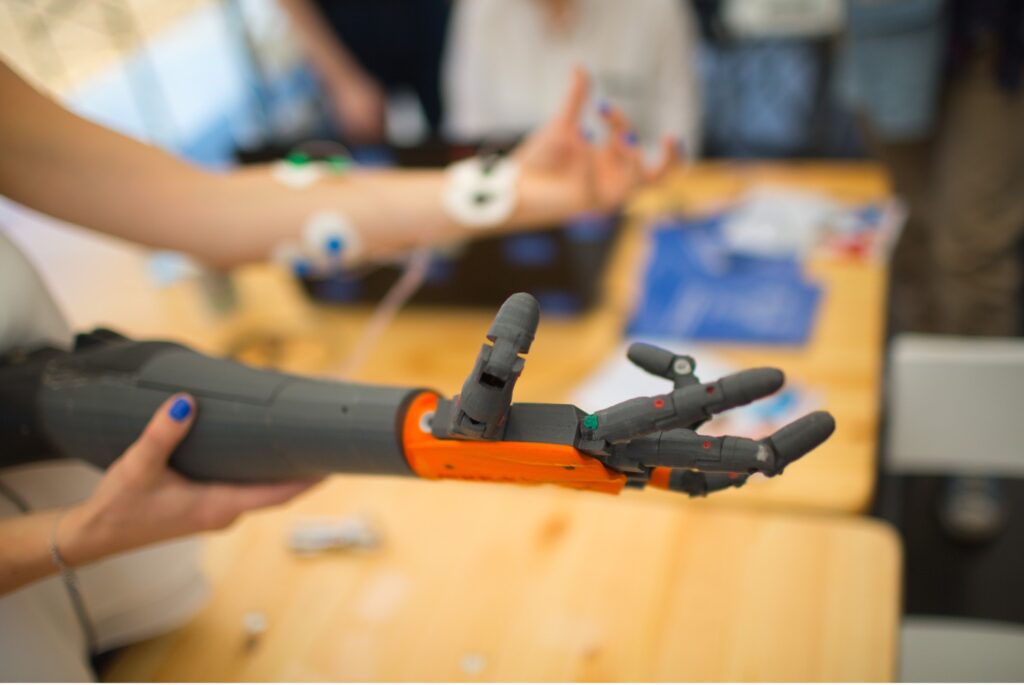Medical prototyping can help reshape how we treat illness and heal. It uses state-of-the-art technologies to develop enhanced products for broader implementation. Rapid prototyping supports cost-effective innovation to revolutionize the healthcare industry. Discover the benefits of a safer world.
Medical prototyping uses sophisticated techniques to develop better tools for the healthcare industry. It can help reshape how we research data, treat disease, and heal patients. Rapid prototyping encourages innovation among individuals and organizations to promote enhanced goods and services. The future of our species could depend on it.
Modern medicine relies on high-quality manufacturing to develop safe and effective products. Doctors, nurses, and hospitals can be liable for accidents, oversights, and mishandling. Meanwhile, people’s lives can change instantly without appropriate medical attention. Rapid prototyping lets industry leaders troubleshoot various design aspects before mass distribution or implementation.
Medical prototyping carries multiple benefits for communities, administrators, and manufacturers. It can help product development teams comply with strict ISO standards, but that’s only the tip of the iceberg. Let’s learn how rapid prototyping supports modern medicine and shields patients from human error.
Table of Contents
How Does Medical Prototyping Work?
Why Is Rapid Prototyping Essential for the Healthcare Industry?
Five Benefits of Medical Prototyping
#1. Medical Prototyping Improves Patient Confidence
#2. Medical Prototyping Minimises Healthcare Costs
#3. Medical Prototyping Guarantees Regulatory Compliance
#4. Medical Prototyping Enhances Existing Product Designs
#5. Medical Prototyping Advances the Healthcare Industry
The Future of Medical Prototyping
Using Medical Prototyping to Your Advantage
What Is Medical Prototyping?
Understanding the nuances of medical prototyping is essential because medicine is a highly regulated industry, and lives are at stake. One minor mishap can cause a chain reaction that threatens the well-being of communities. Medical professionals must have access to reliable emergency tools with little or no time to double-check specifications.
This process lets medical suppliers handle quality assurance matters before it’s too late. Rapid prototyping services can uncover hidden design flaws and coordinate industry best practices to guarantee top quality.
“Without RP, underdeveloped products could reach the market to wreak havoc.”
Building prototypes for the medical field is a multi-step process. It is a balancing act between innovation and regulation. Engineers must comply with countless rules while testing new concepts and constructing functional models. Medical prototyping lets them do that for less time and money than traditional product development methods.
How Does Medical Prototyping Work?
Medical prototyping can help take healthcare to new levels. For example, health and fitness companies use rapid prototyping to create surgical tools, develop wellness products, and design testing kits. However, many medical professionals require more precise reports for an accurate diagnosis. They need top-down exactitude to ensure a positive impact.
High-tech medical facilities also seek the most expedient methods and prefer efficient techniques over traditional approaches. They strive to remain cutting-edge and offer leading treatments with high probabilities for success. Yet, none of that is possible without medical knowledge and manufacturing tools to help produce innovative ideas.
“Medical prototyping helps healthcare innovators harness their expertise to bring life-saving products to the market.”
Those in medicine could also increase testing accuracy and streamline surgical procedures with enhanced designs. Eliminating the functional flaws in medical tools means better outcomes for professionals and patients. RP modeling ensures a smaller margin of error from conception to creation.
Medical prototyping uses in-field experience to develop, deliver, and implement industry improvements. Those improvements are evident in the following healthcare amenities:
- Same-Day Test Results
- Prosthetics
- Organ Management
- Joint Replacement
- Emergency Surgeries
- Medical Imaging
- Human Tissue Models
Rapid prototyping advancements play critical roles in the healthcare industry. High-tech manufacturing facilities and superior standards mean new possibilities for medical instrument design.
FACT: There is a yearly med-tech expo where healthcare industry leaders meet to share exciting discoveries.

We offer fast, high-quality, tailored PROTOTYPING solutions for leading companies in a wide range of industries.
superior Rapid PROTOTYPING
Why Is Rapid Prototyping Essential for the Healthcare Industry?
Medical care can be expensive. Several factors can affect how much you pay for healthcare services. Visiting the hospital costs more than going to a doctor’s office because emergency rooms can treat severe cases with little warning. However, they require high-precision medical tools to protect patients from harm.
Meanwhile, healthcare experts must fulfill IEC 62366-1:2015 during formative evaluations to comply with the most fundamental industry requirements. Medical prototyping in the early product development stages helps reduce manufacturing costs and decrease liability. It ensures steadfast compliance for global distribution.
Medical prototyping also helps product developers avoid costly design corrections. The process can increase usability and ensure safer interactions with unfamiliar tools. MedTech innovators should take advantage of the opportunity to target specific groups with specialized solutions for rare medical issues.
Five Benefits of Medical Prototyping
There are several benefits of using rapid prototyping to turn concepts into realities. Modern technologies have already reshaped how we approach many healthcare concerns.
“Upgraded tools and techniques boost our quality of life, prolong life expectancy, and deliver new opportunities to underrepresented communities.”
They are essential, albeit not always easy to make.
Hence, medical device manufacturing is an in-demand industry. Prototyping provides MedTech innovators with resources to continue questioning the status quo. Without this process, creative minds would feel less motivated to pursue ideas for fear of the costs or consequences. Med RP also removes some barriers to entry for burgeoning healthcare startups.
The dual-sided dynamic between creativity and compliance means medical prototyping is a must. It can help improve the patient’s health, reduce medical malpractice concerns, cut treatment costs, and prevent avoidable health problems. Check out these other five benefits:
#1. Medical Prototyping Improves Patient Confidence
Patients feel safe when they are comfortable and confident in their healthcare provider’s abilities. They visit their doctor’s office more often and keep appointments with medical specialists. Contrarily, those with a negative healthcare experience are more likely to skip appointments or refuse medical attention. This trend threatens community wellness and can reduce profits across the industry.
This process protects the primary purpose of most instruments and testing devices. It improves safety, efficacy, and efficiency without increasing risk. Creating and evaluating designs helps engineers determine potential dangers and develop better strategies to eliminate them.
The healthcare industry sees plenty of medical devices recalled to appreciate the significance of rapid prototyping services. Accidents, oversights, and inaccuracies can cost the manufacturer millions of dollars. Meanwhile, incorrectly designed medical products can cause injuries and leave establishments or practitioners liable for damages.
#2. Medical Prototyping Minimizes Healthcare Costs
Healthcare costs have skyrocketed over the last few decades, leaving many hospitals and medical professionals scrambling to reduce prices. They don’t want to cut quality for more affordable services, so they lean on medical prototyping to test cost-effective concepts. This helps minimize expenses on both ends of the spectrum.
“Medical prototyping helps keep manufacturing costs low by eliminating early-stage design flaws and production delays.”
While spending money on RP might seem counterintuitive, talented engineers can help expedite orders and decrease the time to market. High-tech facilities can also handle large-scale projects with in-house equipment to prevent outsourcing fees.
#3. Medical Prototyping Guarantees Regulatory Compliance
Industries with direct consumer ties must comply with higher manufacturing standards. Those standards help maintain consistency across global economies while ensuring top-quality from domestic suppliers. Each industry encounters different regulations, with the medical field under the closest scrutiny.
The Food and Drug Administration (FDA) requires at least seven criteria for medical device manufacturing. Engineers, healthcare professionals, and industry regulators must collaborate to create compliant goods and services. Failure to meet the necessary standards can mean exorbitant fines, legal controversies, and licensing investigations. Streamline the process and protect your interests with medical prototyping.
#4. Medical Prototyping Enhances Existing Product Designs
Some issues with medical instruments are minor and don’t cause concern. However, significant problems can inspire more severe outcomes. Medical prototyping helps reveal existing design flaws to prevent untimely mishaps and life-threatening accidents. It gives product developers time to correct issues before they become liabilities.
“Medical prototyping helps responsible parties refine problematic concepts and adjust to accommodate new regulations in a saturated market.”
With an industry worth over $156 billion, it’s no wonder medical suppliers and product designers are competitive. Unfortunately, the competitive nature can cause some details to fall through the cracks.
#5. Medical Prototyping Advances the Healthcare Industry
Rapid prototyping is a quick and convenient way to test theories and develop products faster than competitors. The speed can attract new patients seeking advanced medical treatments and experimental procedures. Better healthcare services mean more attention to groundbreaking discoveries that could save additional lives.
Experts can also utilize additive manufacturing (3D printing) to edit designs and produce novel commodities quickly. Sleek techniques help them avoid dealing with supply chain disruptions or regulatory restrictions. Healthcare suppliers benefit from convenient medical prototyping because machine learning algorithms allow them to test various scenarios and maximize productivity.
Consumers who recognize or use healthcare innovations are the first to appreciate their gains. Medical prototyping can ensure wellness professionals offer comprehensive and customized support. This encourages more appointments, candid interactions, and compliance with medical advice. It can also shorten wait times, reduce treatment costs, and motivate responsible behaviors.
NOTE: Ineffective or risky medical treatments are partially to blame for patients distrusting healthcare workers.
The Future of Medical Prototyping
There are many predictions about how MedTech will transform healthcare services and equipment. Improved designs and high-tech features can help medical professionals diagnose and treat ailments accurately. They can also foster more expedient lab research and shorten recovery times for some patients. Those transformations will likely rebuild some of the trust lost during the controversial COVID-19 pandemic.
To remain relevant and practical, today’s healthcare industry must keep up with technological advancements and social expectations. Healthcare workers cannot deviate too far from the norm without compliance issues or licensing problems. However, this process helps them play with new ideas without jeopardizing their reputations.

We offer fast, high-quality, tailored PROTOTYPING solutions for leading companies in a wide range of industries.
superior Rapid PROTOTYPING
Using Medical Prototyping to Your Advantage
Medical prototyping should inspire you to think outside the box and protect you from liability. Manufacturing experts can help your team develop innovative products that meet or exceed industry standards. You can also troubleshoot items, improve inventory, or invent revolutionary solutions to rare challenges.
Make the most of medical prototyping to reap the benefits and elevate your industry. Here are some tips to help:
- Determine Your Requirements. Find the lead times, tolerances, and materials required for your medical prototype.
- Calculate Your Budget. Define the parameters of your project by creating a flexible spending plan that accommodates unexpected expenditures.
- Share Your Designs. Provide detailed information to your engineering team for inspection, evaluation, and development. Follow their advice when adjusting the features.
- Consider Your Intentions. You can save money with rudimentary medical prototyping and focus on functionality over fashion.
- Check the Specifications. Ensure your rapid prototyping provider can offer industry-leading medical prototyping services. Comply with ISO to lessen your financial burden.
Use medical prototyping advantages to save lives, money, and time. Modern healthcare experts no longer look to traditional techniques for solutions and treatments. They want options that utilize the latest technology, and rapid prototyping helps them determine where those technologies work best.
“Without troubleshooting and flexibility, you cannot innovate products in a closely regulated industry.”
However, high-risk markets require creative problem-solving and transparency. Eventually, patients won’t trust healthcare providers using outdated instruments. Medical prototyping provides the versatility needed to challenge the status quo and the reliability mandated by ISO.
Conclusion
Medical prototyping can help reshape how we treat illness and heal. It uses state-of-the-art technologies to develop enhanced products for broader implementation and in-depth education. Rapid prototyping also supports cost-effective innovation to revolutionize the healthcare industry. Discover the benefits of a safer world.
Priorities rapid prototyping when improving innovative healthcare solutions. Take advantage of its cost-cutting benefits and comply with strict industry standards without sacrificing product quality. Help practitioners save more lives with medical prototyping and comprehensive product development.
 About the Author
About the Author
James Murphy is the founder and CEO of HLH Rapid – a hybrid CNC machine shop fusing Western service and quality with Eurasian industry influences for over 14 years. His advanced enterprise uncovers cost-effective rapid injection molding techniques to remain unmatched by industry competitors. Murphy’s full-service fabrication and manufacturing methods span six dedicated zones, from 3D printing and vacuum casting to sheet metal prototyping and project management. His expertise also includes high-efficiency machining within strict yet volatile markets.
Murphy earned an MBA after becoming inspired by his father’s hands-on craftsmanship. As a budding entrepreneur, he taught English and studied Chinese to pursue pioneering objectives. His groundbreaking approach helps build the future by providing well-rounded manufacturing services to innovative Western businesses. When he’s not offering upscale RP and CNC, James enjoys art-house movies, Thai boxing, and spending time with his growing family.


